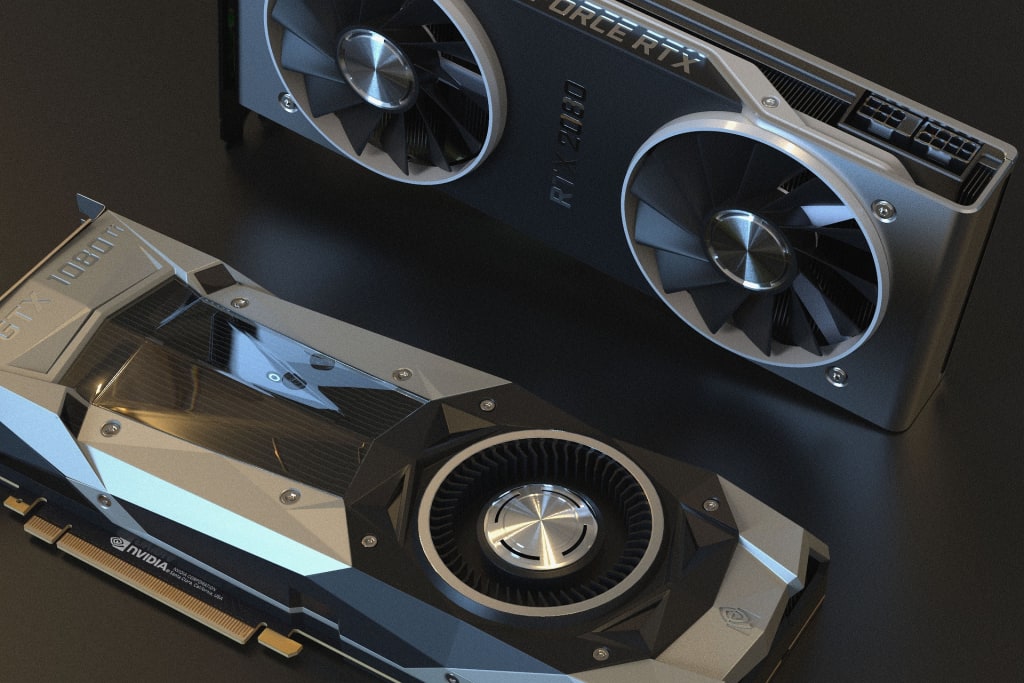Graphics Revolution in the Gaming Industry
Beyond Realism

A Pixelated Past: A Look Back at the Graphics Revolution
From the blocky beginnings of Pong to the photorealistic landscapes of today's games, computer graphics have undergone a revolutionary transformation. This journey, spanning decades of innovation, has blurred the lines between reality and simulation, pushing the boundaries of what's possible on our screens. This article delves into the fascinating history of graphics technology, exploring the key milestones and technological leaps that have shaped the way we experience games and other visual media.
Early Days: Humble Beginnings (1950s-1970s)
The earliest forms of computer graphics were rudimentary at best. The 1950s saw the birth of the first graphical user interfaces (GUIs), with primitive line drawings and text-based displays laying the groundwork for future developments. In the 1960s, vector graphics emerged, utilizing mathematical equations to represent lines and shapes. Games like Spacewar! (1962) showcased the potential of vector graphics, depicting spaceships and celestial objects with clean lines and simple animations.
The 1970s marked the introduction of raster graphics, a fundamental building block of modern displays. Raster graphics represent an image on a screen as a grid of pixels, each containing color information. Arcade classics like Pong (1972) and Space Invaders (1978) relied on raster graphics, albeit with incredibly low resolutions and limited color palettes.
The Rise of 3D Graphics (1980s-1990s)
The 1980s witnessed a significant leap forward with the introduction of 3D graphics. These early 3D environments were built using wireframe models, depicting objects as lines in three-dimensional space. Games like Battlezone (1980) and Wing Commander (1990) pioneered the use of wireframe graphics, creating a rudimentary sense of depth and immersion.
The latter half of the decade saw the development of polygon-based 3D graphics. Polygons, which are essentially flat shapes with connected vertices, became the foundation for creating more complex 3D objects. Early efforts resulted in blocky characters and environments, as seen in Super Mario 64 (1996) and Tomb Raider (1996). However, they laid the groundwork for the smooth, curved surfaces of future generations.
The 1990s brought further advancements in 3D technology. Texture mapping, the process of applying images to 3D models, added visual detail and a sense of realism. Lighting effects like shadows and reflections started to appear, further enhancing the visual fidelity of games. Titles like GoldenEye 007 (1997) and Half-Life (1998) showcased the maturing state of 3D graphics, with more detailed environments and smoother animation.
The Era of High Definition and Beyond (2000s-Present)
The turn of the millennium ushered in the era of high definition (HD) graphics. With increased resolution and advanced rendering techniques, games started to resemble real-world environments more closely. Anti-aliasing, a process that smooths out jagged edges, became a cornerstone of HD visuals. Titles like Halo: Combat Evolved (2001) and Grand Theft Auto: Vice City (2002) showcased the stunning detail and world-building capabilities offered by HD graphics.
The 2000s also saw the rise of real-time physics engines, which simulate real-world physics principles in games. This resulted in more dynamic environments and ragdoll physics, where characters and objects react realistically to collisions and forces. Games like Half-Life 2 (2004) and Red Dead Redemption (2010) incorporated advanced physics engines, creating more believable and immersive gameplay experiences.
As technology continued to evolve, developers pushed the boundaries of graphical fidelity. Shaders, which are small programs that control the way light interacts with surfaces, became crucial for adding realistic textures, lighting effects, and shadows. High-dynamic range (HDR) lighting further heightened visual realism by replicating the wide range of brightness and contrast observed in real-world environments. Games like Red Dead Redemption 2 (2018) and The Last of Us Part II (2020) pushed the boundaries of graphical fidelity with their meticulously crafted environments and lifelike character models.
Beyond Realism: The Future of Graphics
While the pursuit of graphical realism continues, the future of graphics technology promises even more exciting possibilities. Ray tracing, a technique that simulates the behavior of light in real time, is poised to revolutionize lighting and reflections in games. This technology creates lighting that is incredibly lifelike and dynamic, with accurate shadows and reflections that react realistically to their surroundings. Titles like Cyberpunk 2077 (2020) and Metro Exodus (2019) utilize ray tracing to stunning effect, showcasing





Comments
There are no comments for this story
Be the first to respond and start the conversation.